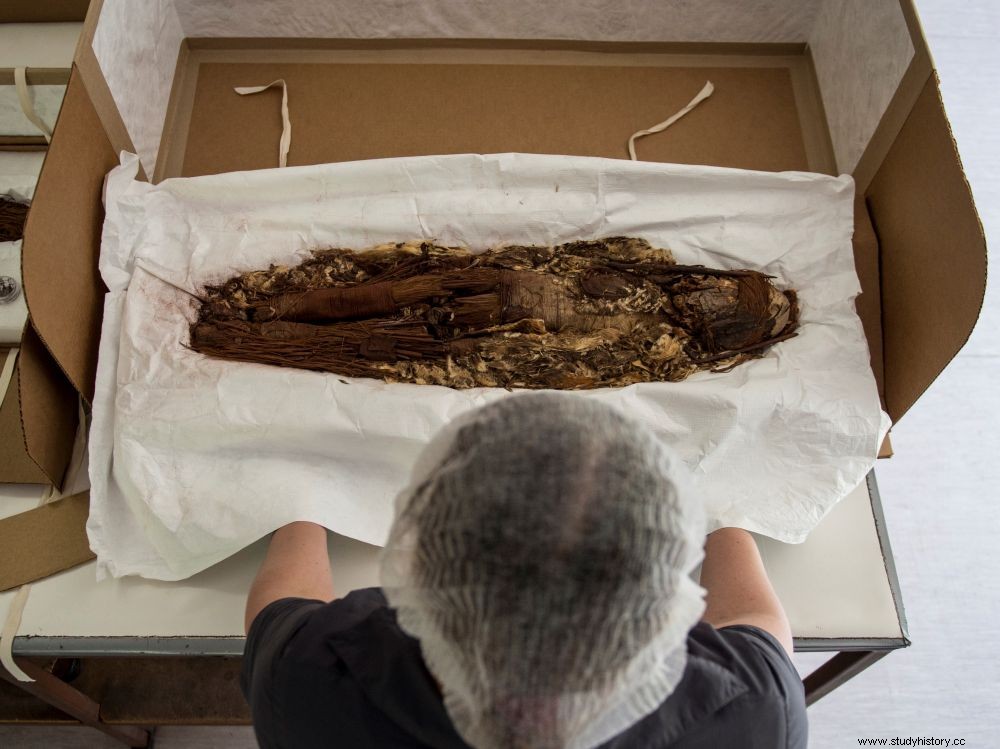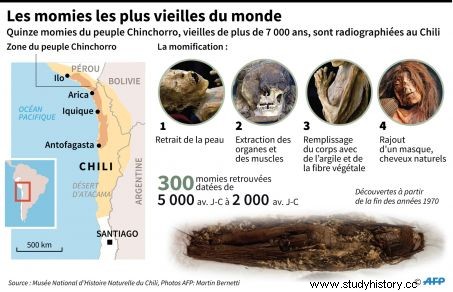A Chilean clinic has analyzed 15 mummies from the Chinchorro people, one of the precursors of mummification.

Chilean researchers have performed a scan on 15 mummies from the Chinchorro people.
SCANNING. Fifteen of the world's oldest mummies were scanned in mid-December 2016 to reveal some or all of their secrets. Composed mainly of fetuses and young children, these remains come from a population of fishermen and hunters who lived on the coast of the Atacama Desert from the years 10,000 to 3,400 BC. Named Chinchorro by archaeologists, these individuals were among the first to mummify their dead. In fact, their mummies are 2,000 years older than those from Egypt. The experiment took place in a clinic in Santiago, the capital of Chile. Interviewed by AFP, Marcelo Galvez, the head of radiology said that the operation made it possible to X-ray them with precision and thus to gather "thousands of images of less than one millimeter ". "The next step is to dissect these bodies virtually, without touching them, to ensure that we can keep them for another 500,000 years ", he added. It is therefore a question here of reconstructing in computer-generated images the morphology of this extinct people. For this, the researchers rely on the profile of the mummies then virtually add to the corpses muscles, a nose and a chin.
The skin was removed and then replaced
These analyzes will allow scientists to better understand the complex process of mummification used by the Chinchorro. The latter, fine connoisseurs of human anatomy, removed the skin and muscles of corpses to have only a skeleton. Then they reconstructed the shape of the body with wood and plant fiber, covered with a layer of clay, finally replacing the skin and adding eyes and a mouth. According to Veronica Silva, head of the anthropology department of the National Museum of Natural History in Santiago, the final preparations consisted of decorating the face, placing a wig of natural hair or mixing animal furs. Quoted by AFP, this one declares that "It was the family (of the deceased) themselves who made the mummy ". The analysis of these 15 corpses has already offered a big surprise:the smallest mummy did not contain a human body. "It has no bone structure and is therefore a figurine which could be a representation of an individual that we could not mummify “, advances Veronica Silva. Other revelations, allowing researchers to better understand this vanished civilization, could follow.

© Anella RETA Pablo LOPEZ / AFP
